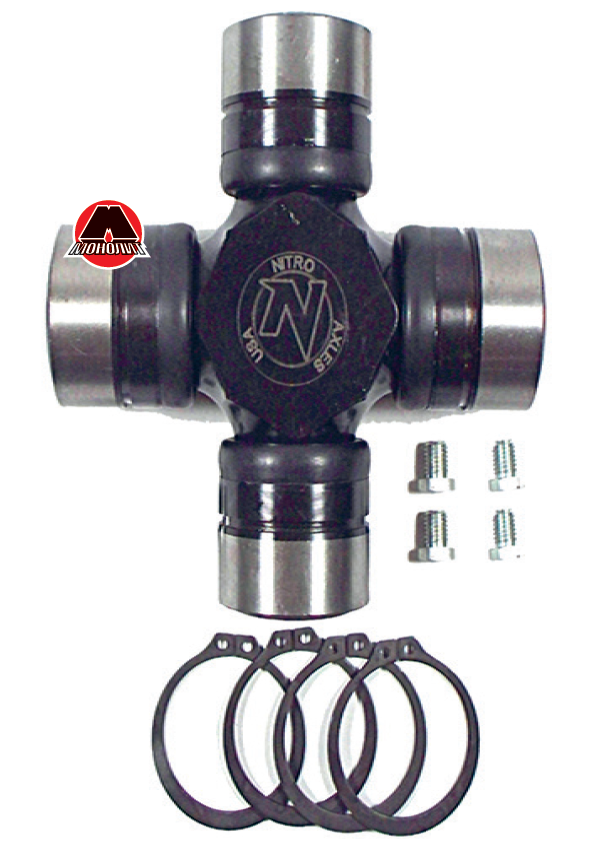5.5.2 Cardan shaft
The cardan shaft is so called because of the use of cardan joints in its design (the simplest of which is shown in the figure).
Cardan joint is a very ancient device. It allows transferring rotation at an angle in different planes. Cardan joint consists of a cross-piece and two forks connected to it, to which, in turn, the shafts are connected - the driving and driven ones (Figure 5.36).
In its simplest form, the cardan joint is fragile. However, in modern cars, the design of the cross-piece has become more complicated due to the development of technology. Its studs now rotate on needle bearings, thus reducing friction losses and increasing the life of the cross-piece, and therefore its durability.
 Figure 5.36 Simple cardan drive.
Figure 5.36 Simple cardan drive.
In case if the transmission is carried out via one cardan joint and the drive shaft rotates evenly, then the driven shaft will rotate unevenly in order to lead the drive shaft and lag behind it twice per revolution. As a result, an uneven rotation of the drive wheel drive mechanisms is obtained. This contributes to an increase in the wear of mechanisms and tires. Unevenness of rotation increases with an increase in the angle between the shafts.
Two such hinged joints are used in order to eliminate this drawback. In case if the forks of both cardan joints are installed on the shaft in the same plane, the unevenness of rotation, which is created by the first cardan joint, will be leveled by the second cardan joint, and the drive wheel drive mechanisms will rotate evenly.

Figure 5.37 Cardan joint cross-piece.



















2 MB